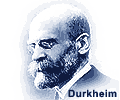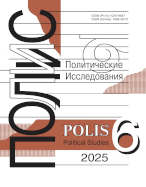Russia as an ally:
the dynamics of public perceptions in Armenian society before and after the 2020 Karabakh war
Atanesyan A.V.,
Yerevan State University, Yerevan, Armenia, atanesyan@yandex.ru
elibrary_id: 962408 | ORCID: 0000-0001-8458-2447 | RESEARCHER_ID: AAZ-9173-2021
Mkrtichyan A.E.,
Yerevan State University, Yerevan, Armenia, amkrtchyan@ysu.am
elibrary_id: 732053 | ORCID: 0000-0002-7891-7068 | RESEARCHER_ID: GAU-9648-2022
Article received: 2022.05.16. Accepted: 2022.11.30

DOI: 10.17976/jpps/2023.02.02
EDN: OYNCOF
Atanesyan A.V., Mkrtichyan A.E. Russia as an ally: the dynamics of public perceptions in Armenian society before and after the 2020 Karabakh war. – Polis. Political Studies. 2023. No. 2. https://doi.org/10.17976/jpps/2023.02.02. EDN: OYNCOF
The strategic relations between the Russian Federation and the Republic of Armenia, reflected in the long-term interstate agreements, resulted from the specific structure of regional security, the pre-Soviet and the common Soviet past, and similar perceptions of external threats at the level of Armenian and Russian political elites and societies. The current transformation of the relationship between Armenia and Russia started at the end of the 20th century with the strong influence of several external factors, which were not tackled timely and appropriately by both states, and brought about essential changes. We analyze several external and internal risk factors in Armenian-Russian strategic relations before and especially after the “Velvet Revolution” in Armenia in the spring of 2018, associated with the coming to power of new political elites. We devote attention to the war in Nagorno-Karabakh in the fall of 2020 and its possible influence on Armenian-Russian relations. We discuss here the role of the Russian Federation during and after the war and the expectations of the Armenian society in connection with Russia’s involvement as an ally. The paper presents the results of a large-scale study we conducted on the perceptions of the role and image of Russia in Armenian society after the war in Karabakh. The research results reveal and explain a number of tangible changes in the perceptions of Russia in Armenia after two key events, the Velvet Revolution in 2018 and the war in Nagorno-Karabakh in 2020. The study partly confirms the hypotheses on the peculiarities of the perception of the image of the Russian Federation among various social groups, in particular, in the context of the friends-enemies dichotomy and in comparison with several other states. It also reveals a correlation with the political orientation of the population representing supporters and opponents of post-revolutionary elites in Armenia. We compare the assessment of the need for Armenian-Russian bilateral relations with the perception of the prospects of Armenia’s participation in pro-Russian and alternative regional militarypolitical and economic unions. We measure Russia’s image in public perceptions in the context of the search for those responsible for the defeat of the Armenian side in the 44-day war in Nagorno-Karabakh.
References
Mikhelidze, N. (2010). The Azerbaijan-Russia-Turkey energy triangle and its impact on the future of Nagorno-Karabakh. Istituto Affari Internazionali. https://www.iai.it/sites/default/files/iai1018.pdf
Roth, K.P., & Diamantopoulos, A. (2009). Advancing the country image construct. Journal of Business Research, 62(7), 726-740. https://doi.org/10.1016/j.jbusres.2008.05.014
Sergunin, A., & Karabeshkin, L. (2015). Understanding Russia’s soft power strategy. Politics, 35(3-4), 347-363. https://doi.org/10.1111/1467-9256.12109
Shiriyev, Z. (2019). Azerbaijan’s relations with Russia closer by default? Chattam House: Russia and Eurasia Programme. https://www.chathamhouse.org/sites/default/files/2019-03-14-Azerbaijan2.pdf
Terzyan, A. (2019). The aftermath of the “Velvet revolution”: Armenia between domestic change and foreign policy continuity. Eastern European Journal of Regional Studies, 5(2), 24-43.
Atanesyan, A., & Chelpanova, D. (2021). The factor of influence of Armenia’s post-protest political elites on Armenian-Russian relations: problems, opportunities and risks. Obshchestvennye nauki i sovremennost, 4, 116-131. (In Russ.) https://doi.org/10.31857/S086904990015657-4
Atanesyan, A.V. (2018a). “We” and “They”: the image of Europe and Europeans in the perceptions of Yerevan youth. Caucasian Science Bridge, 1, 88-102. (In Russ.)
Atanesyan, A.V. (2018b). “Velvet Revolution” in Armenia: potential, gains and risks of political protest activity. Polis. Political Studies, 6, 80-98. (In Russ.) https://doi.org/10.17976/jpps/2018.06.06
Atoyan, V.K. (2015). Foreign policy of Armenia: politics ensuring maximal security. Post-Soviet Issues, 3, 96-120. (In Russ.)
Bahrevskij, E.V., & Svistunova, I.A. (2019). Obraz Rossii v Turcii. Istoricheskoe razvitie i sovremennoe sostoyanie [The image of Russia in Turkey. Historical development and current state]. Moscow: Institut Naslediya. (In Russ.)
Belasheva, I., & Yesayan, М. (2021). Ideas about the future of the country among students of the North Caucasus: analysis of conflict-related trends. Journal of Sociology: Bulletin of Yerevan University, 2, 19-33. (In Russ.) https://doi.org/10.46991/BYSU:F/2021.12.2.019
Borisova, A. (2016). Russian political image in the perception of U.S. and EU expert community. World Economy and International Relations, 60(8), 61-73. (In Russ.) https://doi.org/10.20542/0131-2227-2016-60-8-63-75
Buhovec, O.G. (2011). The image of Russia in Europe and the world: the problem of society and states. Sovremennaya Evropa, 1, 32-46. (In Russ.)
Filippova, E.I., & Le Torrivelelek, K. (Ed.). (2018). Svoi i chuzhie. Metamorfozy identichnosti na vostoke i zapade Evropy [Ours and Others. Metamorphoses of identity in the East and West of Europe]. Moscow: Institut etnologii i antropologii im. N.N. Mikluho-Maklaya RAN. (In Russ.)
Fomin, I.V., & SIlaev, N.Yu. (2018). Armenian nationalism vs. Armenian state: cleavages and coalitions in the discourses on Sasna Tsrer. Polis. Political Studies, 3, 78-92. https://doi.org/10.17976/jpps/2018.03.06 (In Russ.)
Gadzhiev, K.S. (2017). The image of Russia through the eyes of the West. Historical excursion. Svobodnaya mysl', 2, 123-136. (In Russ.)
Grigoryan, G.P. (2017). Interstate relations between Armenia and Russia in 1991–2016. Rossiya i novye gosudarstva Evrazii, 1, 77-91. (In Russ.)
Khalturina, D.A., Korotaev, A.V., Kobzeva, S.V., & Kachkov D.M. (2009). Russia’s image in the world: quantitative and qualitative analysis. Polis. Political Studies, 5, 128-140. (In Russ.)
Kuz'min, A.V. (Ed.). (2012). Imidzhevaya politika Rossijskoj Federacii: teoriya i praktika regionov [Image policy of the Russian Federation: the theory and practice of regions]. Materials of all-Russian scientific and practical conference. Ulan-Ude: Izd-vo VSGUTU. (In Russ.)
Lur'e, S.V. (2017). The image of Russia in the contemporary Armenian conscience. Istoricheskaya psihologiya i sociologiya istorii, 10(2), 206-227. (In Russ.)
Medoeva, Z.G., Vasilenko, I.A., Malysheva, E.M., Hawer-Tukarkina, O.M., & Chugrov, S.V. (2013). The image of Russia: deficit of “soft power”? Polis. Political Studies, 4, 88-99. (In Russ.)
Minasyan, S. (2013). Post-Soviet Armenia’s foreign policy: twenty years at several chairs simultaneously. World Eсonomy and International Relations, 1, 85-92. (In Russ.)
Mkrtichyan, A.E. (2006). The moral-ethical problems of the Armenian state service. Sociological Studies, 11, 43-48. (In Russ.)
Myltasova, O.V. (2019). Okno Overtona – ugroza razvitiyu obshchestva [Overton window – a threat to the development of society]. In Materialy XXII Mezhdunarodnoi konferentsii pamyati professora L.N. Kogana «Kul'tura, lichnost', obshchestvo v sovremennom mire: metodologiya, opyt empiricheskogo issledovaniya [Materials of the XXII international conference in memory of professor L.N. Kogan “Culture, personality, society in the modern world: methodology, empirical research experience”] (pp. 761-767). Ekaterinburg: UrFU. (In Russ.)
Puhov, R.N. (Ed.). (2021). Burya na Kavkaze [Storm in the Caucasus]. Moscow: Centr analiza strategij i tekhnologij. (In Russ.)
Selunskaya, N.B., & Petrova, O.S. (2021). The image of Russia as a “historical space” in historiographical discourse and in memory of Russian emigrants. Human Capital, 3, 70-80. (In Russ.) https://doi.org/10.25629/HC.2021.03.06
Shanyavsky, A. (2016). Integration turn of Armenia from the EU towards the EAEU. 21st century, 1, 43-69. (In Russ.)
Shestopal, E.B., Smulkina, N.V., & Morozikova, I.V. (2019). Comparative analysis of one’s own country images in Russian regions. Comparative Politics, 3, 74-94. (In Russ.) https://doi.org/10.24411/2221-3279-2019-10031
Shipilov A.V. (2008). «Svoi», «chuzhie» i drugie [“Own”, “Aliens”, and “Others”]. Moscow: Progress Tradiciya. (In Russ.)
Smol'ev, V., & Gukasyan, V. (2018). Armyano-rossijskie otnosheniya v period nezavisimosti. Kratkaya hronologiya [Armenian-Russian relations in the period of independence is a brief chronology]. Erevan: Soyuz informirovannyh grazhdan. (In Russ.)
Tokarev, A.A., & Margoev, A.R. (2019). The influence of Armenian elite groups on relations with Russia after the power transition. Journal of International Analytics, 4, 50-57. (In Russ.) https://doi.org/10.46272/2587-8476-2019-0-4-50-57
Tsedilina, E.V. (2013). Strategic dilemma of Armenia. Russia and the new states of Eurasia, 2, 17-28. (In Russ.)
Vilisov, M.V., Batovrina, E.V., & Mikhaylova, O.V. (2021). The perception of Russia by young people in post-Soviet countries: the experience of sociological assessment. Outlines of Global Transformations: Politics, Economics, Law, 14(5), 212-230. (In Russ.) https://doi.org/10.23932/2542-0240-2021-14-5-11
Yurasov, A.V., & Gevondyan, A.V. (2017). Rossiya – Armeniya: druzhba, proverennaya vekami. Katalog istoriko-dokumental'noj vystavki [Russia – Armenia: friendship proven for centuries. The catalog of the historical and documentary exhibition]. Moscow: Kuchkovo pole. (In Russ.)
Zhuchkova, Yu.V., & Miroshnikov, S.N. (2017). ES i Armeniya: ne vse poteryano? [EU and Armenia: not everything is lost?]. Vestnik Tomskogo gosudarstvennogo universiteta. Istoriya, 50, 64-68. (In Russ.)
Zolyan, S. (2017). On the dynamic approach to the notion of a national identity (on the description of the Armenian identity). Sotis – sotsial'nye tekhnologii, issledovaniya, 1, 41-47. (In Russ.)
See also:
Lantzov S.A.,
The second Karabakh war: background, causes, consequences. – Polis. Political Studies. 2022. No3
Atanesyan A.V.,
“Velvet Revolution” in Armenia: Potential, Gains and Risks of Political Protest Activity. – Polis. Political Studies. 2018. No6
Pishcheva T.N., Vinogradova N.S., Nedova A.D.,
The image of Russia through prisms of political communications. – Polis. Political Studies. 2010. No4
Gasparian A.,
Armenia - Russia: A Stable Course of Strategic Partnership. – Polis. Political Studies. 1998. No6
Pastukhov V.B.,
«Perestroika» – second round. – Polis. Political Studies. 2011. No1




.jpg)






 print
print
.jpg)
.jpg)